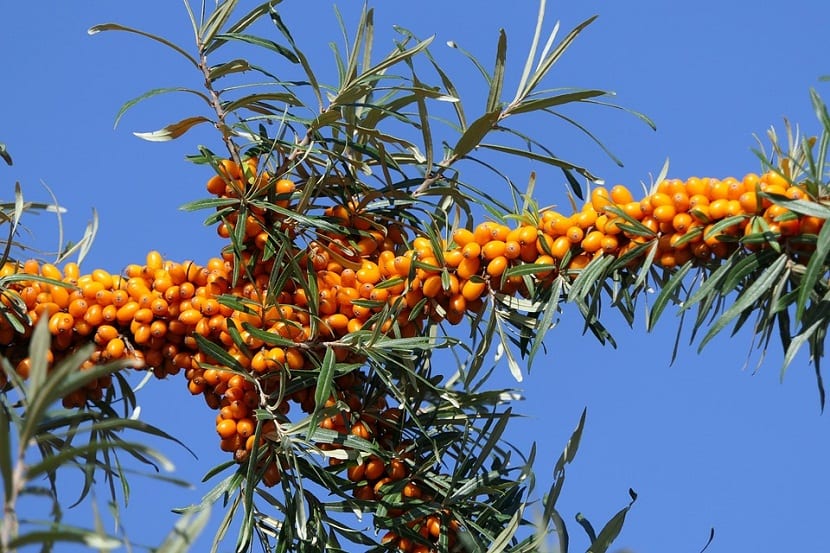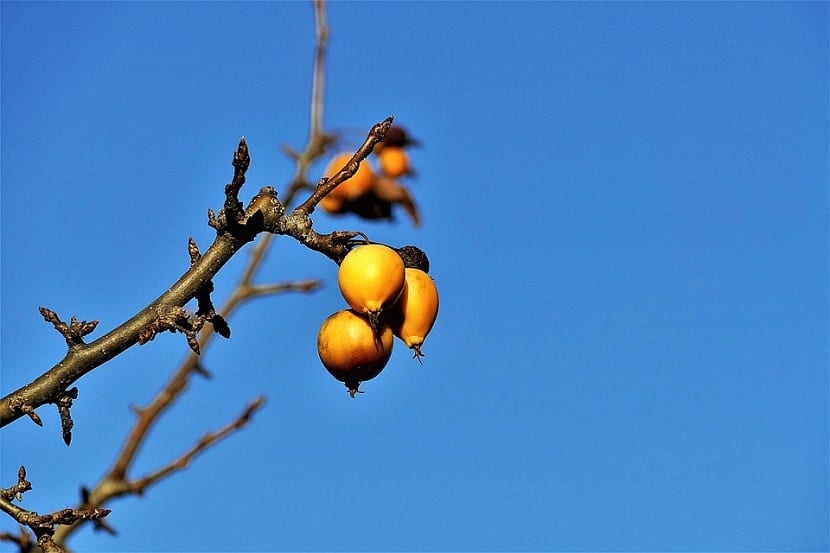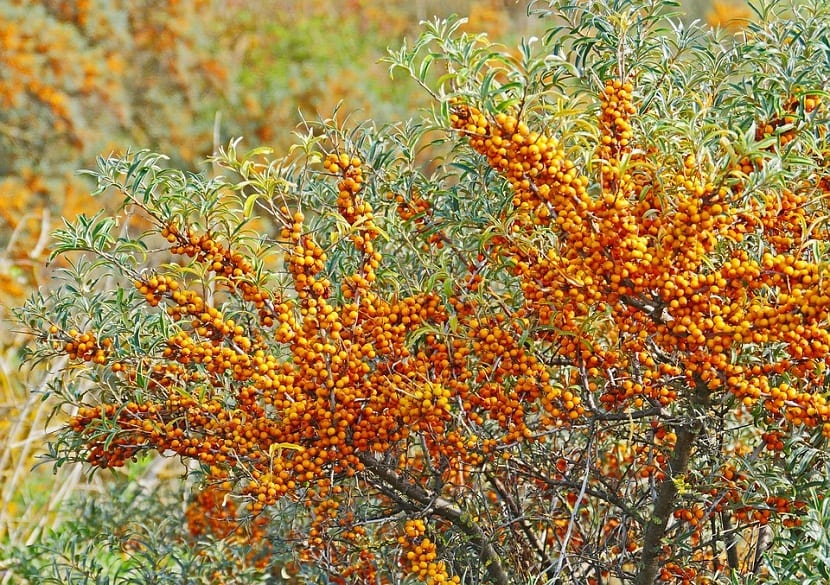
Buckthorn (Rhamnus catharticus) is a small deciduous tree or large shrub that can reach up to six meters in height. It has oval-shaped green leaves and can be easily identified by the small thorns on the tips of its branches.
Other names by which it is known are European buckthorn, common hawthorn and hart's hawthorn. Buckthorn is considered an invasive species due to the dense thickets it forms.
From

Buckthorn can be found in most of Europe (except Iceland and Turkey) and Western Asia. It is said that it arrived in North America during the XNUMXth century, when it was used as an ornamental shrub and to cut the wind, but its spread in American territory did not occur, until the beginning of the XNUMXth century.
This shrub is seen forming hedges along the tracks and on the slopes of ravines.
Characteristics of the Rhamnus catharticus
Buckthorn It is a small perennial plant of the so-called invasives. It can be found in slightly shaded areas, it is resistant to various types of soil. While well-drained soil is preferable, it tolerates clay very well. Its branches are inclined and end in a short thorn.
In relation to its leaves, these can be opposite or follow an alternative pattern. They are oval in shape and have a veiled or dark green color, which gradually degrades at the bottom. It has small flowers that form groups in the axils of the leaves or in the branches along its stem. Its flowers are yellowish green and unisexual.
Its fruits or berries are small, initially dark purple and then black. Each of the berries contains up to four seeds. Buckthorn flowers between the months of May and June, when its leaves emerge. While its fruits ripen between August and September.
Birds and other animals play a very important role in the propagation of buckthorn seeds. As it is a rapidly developing shrub, it can be reproduced, either from the seeds or from the stump sprout. It is fast growing and can be reproduced from seeds or shoots from the stump. The seeds of Rhamnus catharticus they can retain their properties for several years.
Farming
It thrives between the months of May and June, giving way to its fruits in the summer season. It is recommended to sow its seeds during the fall in cold weather. For better cultivation, the seedlings should be placed separately in pots, once developed, they should be planted in the greenhouse, preferably in a cold environment.
It is necessary to collect the seeds as ripe as possible, in order to keep the active principles intact. This shrub reproduces from the seeds or suckers of its roots. To obtain its seeds, the fruit of the plant is crushed, then it is left to macerate for a whole day, in order to separate the pulp remains, which can negatively affect germination.
Uses

The bark and fruit of the buckthorn are used as laxatives, however, their effect can be quite unpleasant, so it is rarely recommended. Its ripe berries serve as a purgative, cleanser and diuretic, but due to its violent effect, it is not recommended in children. Caution should be taken during its use, because large doses of the fruit can cause vomiting and severe diarrhea.
Prevention and control
There are a number of methods that can be used to control buckthorn, from mowing, digging, and burning when prescribed. Cutting the bushes frequently reduces the strength of the plant. Hawthorn control work can be done manually or with the use of equipment, considering the size of the bushes.
Prescribed burning is an effective way to control buckthorn. This method will remove mature bushes; however, new shoots can occur from the roots and trunks of the hawthorn. Chemical methods can also be applied, used to prevent new outbreaks.